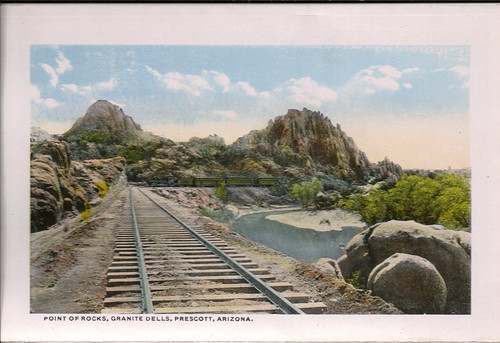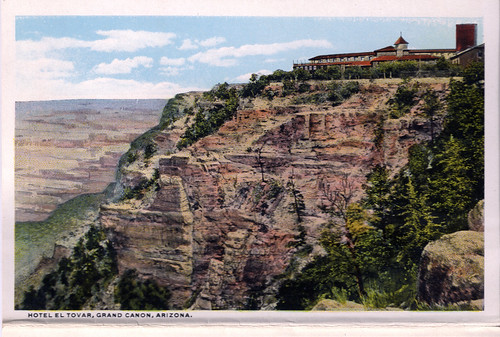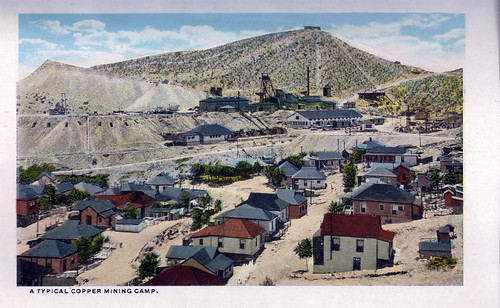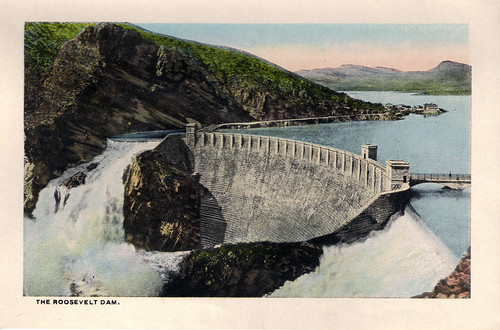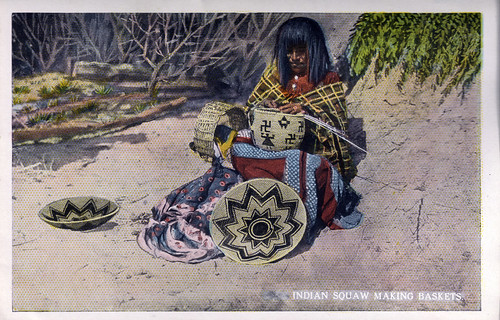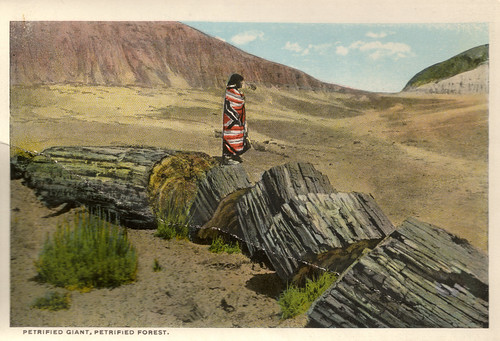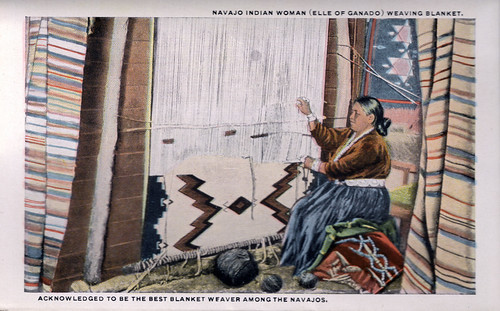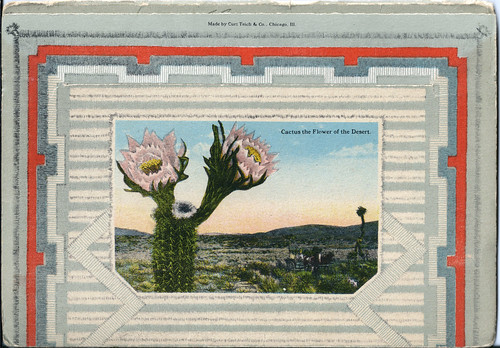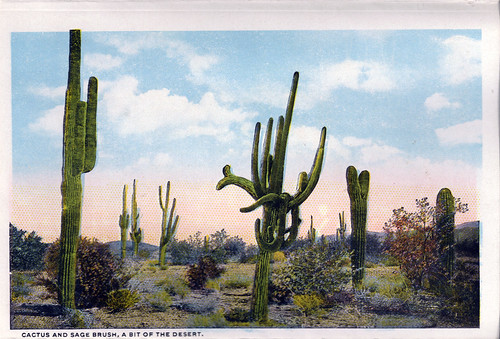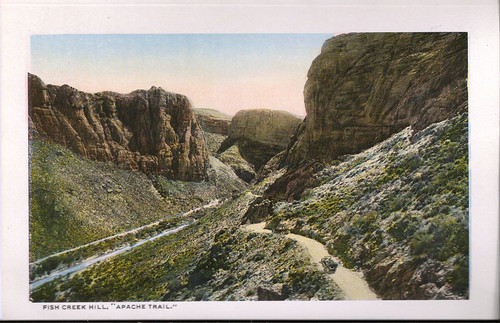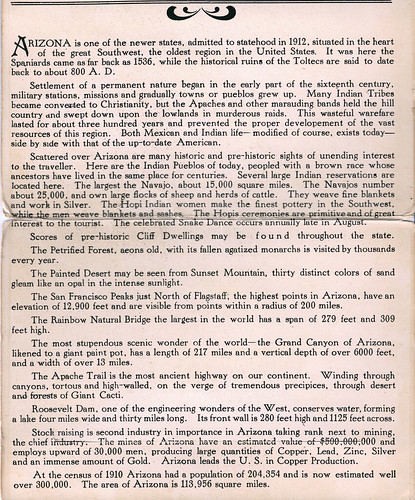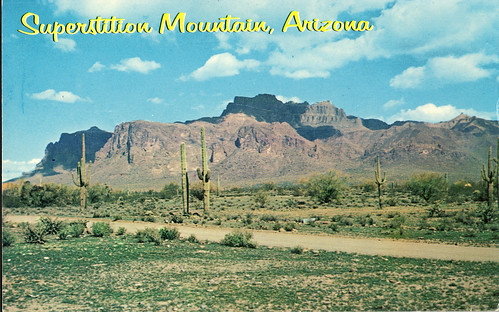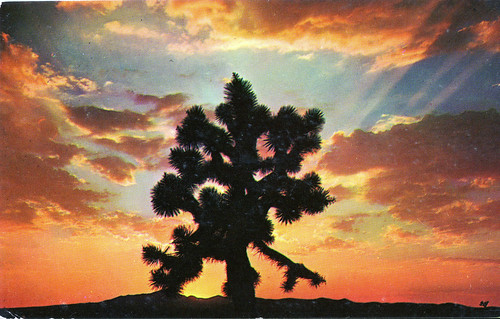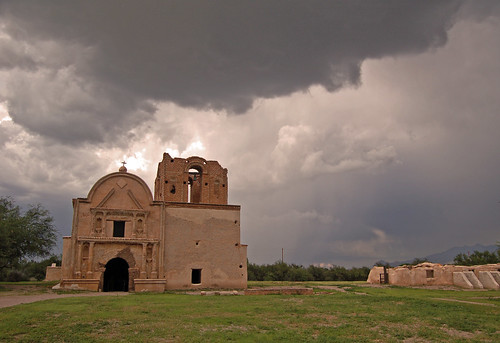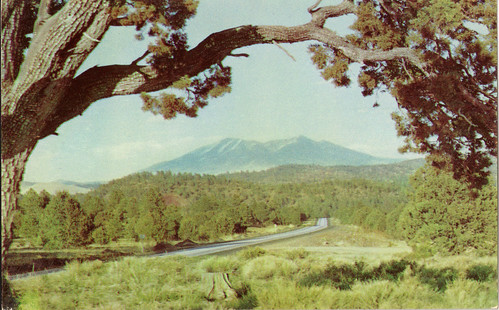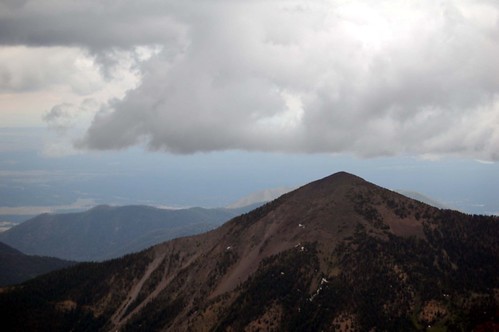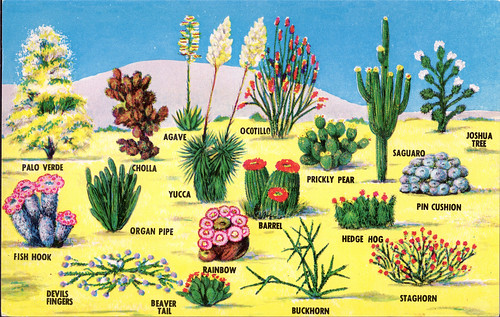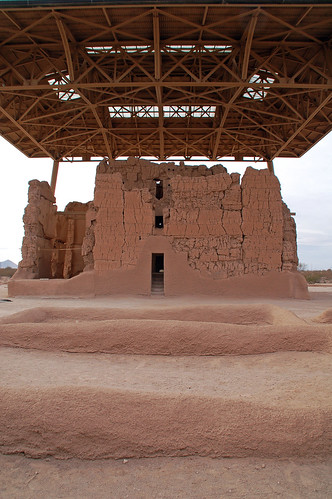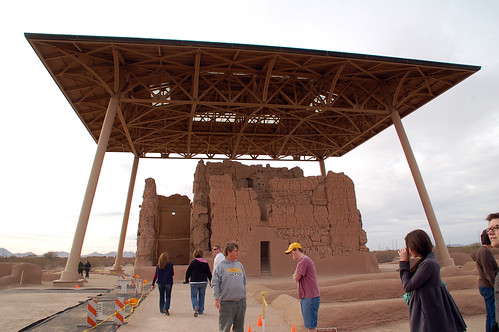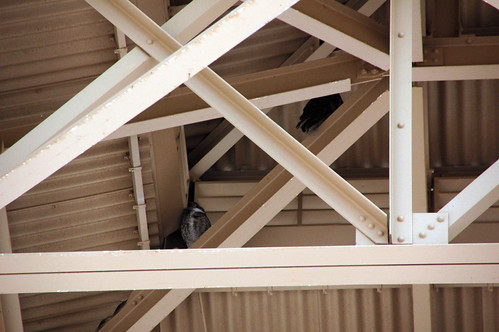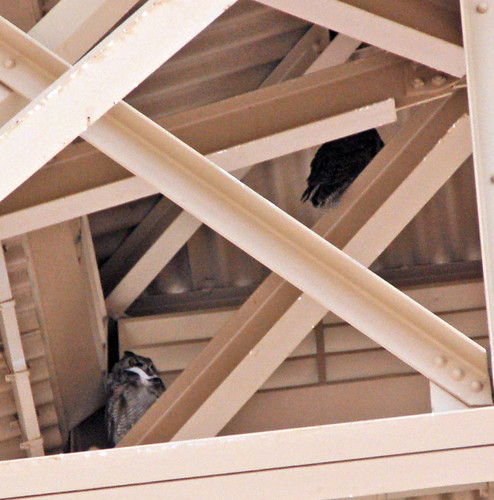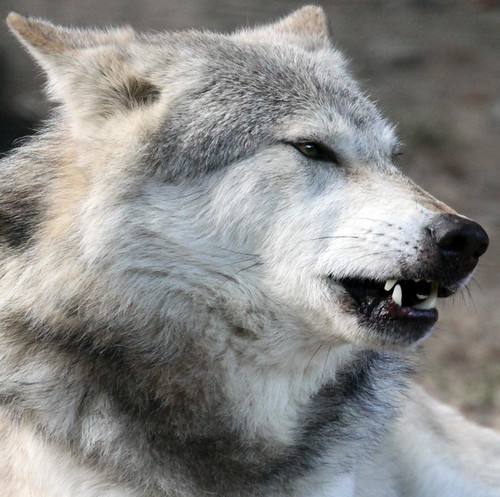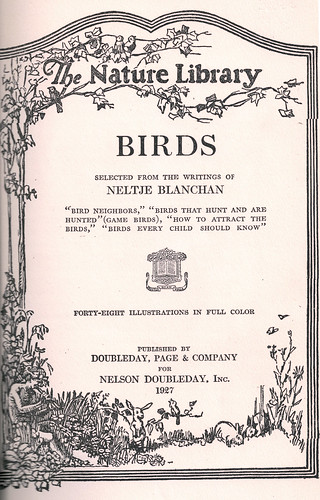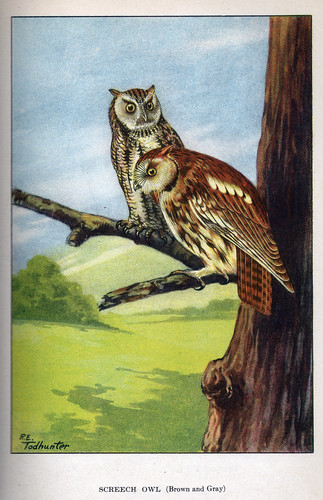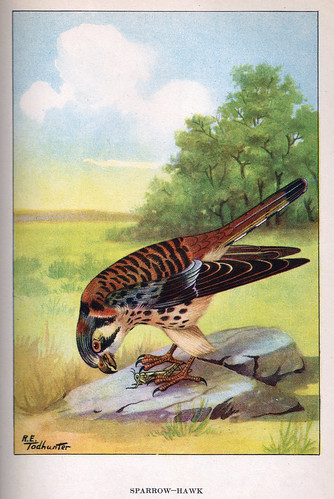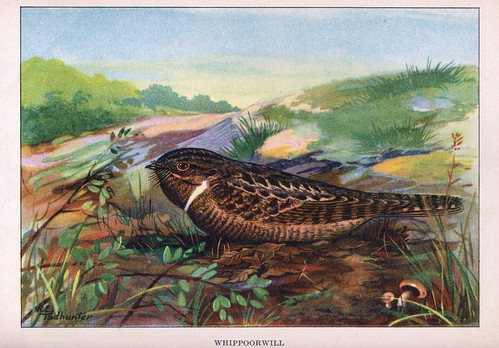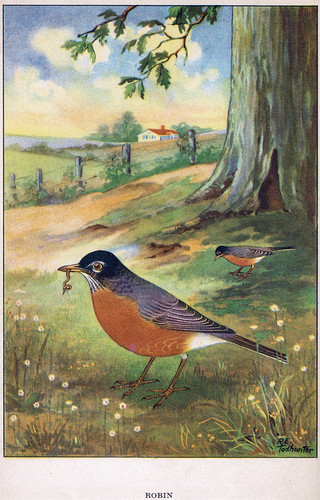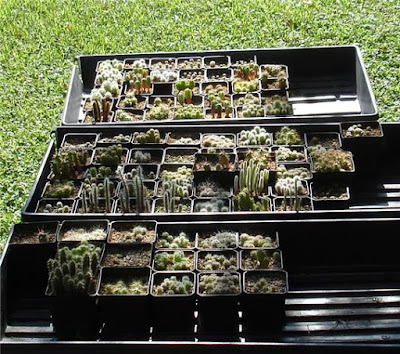Peter Breslin is a musician, an educator, and a cactus expert. When I see Peter,
we're generally in an environment where it would be rude, inappropriate or
impossible (such as poetry readings) to sit around shoot the breeze about cacti,
so I thought I'd satisfy my curiosity and share the benefits of Peter's cacti
knowledge at the same time.
In addition to the picture Peter was kind enough to supply, here's a link to his
photo site with many, many more cacti pictures. Of course, Peter owns the copyright
to those photos, as well as the photos in this article.
Q&A with Cactus Guru, Peter Breslin
1. How did you get started studying cacti? What sort of things do you do?
I've been interested in cactus plants since I was about 10 years old
and my grandmother bought me one. I then got a classic popular cactus
book called
The Encyclopedia of Cacti in Colour by Edgar and Brian
Lamb. The Lambs were UK eccentrics and internationally recognized
amateur cactus experts who grew thousands of cacti and succulents in
their greenhouses in Worthing on Sussex, England. I joined their
cactus club and received their newsletter called
"The Exotic Collection"with
color photos and descriptions of visits to Mexico and so on. It really was
exotic stuff for a Pennsylvania boy.
I research by reading books and journal articles (there are several
cactus journals published periodically every year). I also communicate
with a lot of the recognized experts. I do a lot of amateur field
work, basically just looking for and photographing plants. In the
field, I tend to target the rarest plants and get quite a thrill when
I find populations of them, usually in some pretty wildly remote
locations, but sometimes right along an interstate highway.
2. You grow cactus as well, yes?
Yes. I currently have a couple hundred plants and dozens of seedlings.
I sold about 300 seedlings to a nursery a few months ago. The past few
years, we've lived in the same suburban house with a yard. Whenever I
settle for any length of time I start accumulating cacti. It's
especially dangerous here in Tempe because many cacti can be grown
outside year round. I basically have too much room and I completely
lack self discipline. I'm a member of a cactus forum on the web,
www.cactiguide.com, and those people are just as crazy as I am, so
that's been encouraging. I've also been a customer at Mesa Garden,
www.mesagarden.com, for many years and their seed and plant list is so
thoroughly extensive, it's like a Noah's Ark of cacti. If I owned a
home and had a greenhouse, I'd probably eventually be growing
thousands of plants or even have a small business.
Top: Eight-month-old Seedlings
Bottom: Some of Peter's Cacti
3. What are some issues in cactus ecology? Who's looking out for cacti
in the Southwest?
The biggest issues are illegal collecting of rare or specimen plants
by hobbyists, landscapers and nurseries and habitat destruction due to
development. The southwest has been growing so incredibly quickly the
past few decades. Every residential, agricultural, ranching and
mining/drilling project spells catastrophe for the fragile desert
ecosystem. When you combine these pressures with cactus poachers
digging up the less common plants, usually plants that are narrowly
adapted or have dwindling populations already, the picture looks
pretty bleak. Locally, the Tucson Cactus and Succulent Society
(
www.tucsoncactus.org) and the Central Arizona Cactus and Succulent
Society (
http://www.centralarizonacactus.org) conduct rescues of
cactus plants from development or highway construction sites.
Tucson's club in particular has been instrumental in rescuing some
very rare plants, including a plant called Echinocactus
horizonthalonius ssp. nicholii, from the Silver Bell mine area.
Tucson's club is also involved in removing as much invasive grass as
possible to prevent fires in areas where cacti are not adapted to
periodic fire.
Echinocactus horizonthalonius var. nicholii near the Silver Bell mine, Avra Valley AZ.
I'm sure there are other organizations looking out for desert habitat
in general, including state and federal agencies. I've been involved
on a volunteer level doing a population study of a very rare cactus
called Echinomastus erectocentrus var. acunensis, a candidate for
listing as endangered by US Fish and Wildlife. There's only a few
known populations of this plant, any one or all of which could be
wiped out in an afternoon by a poacher or an uninformed landowner.
Echinomastus erectocentrus var. acunensis
I think desert conservation is a difficult area in general. Many
people think of the desert as basically a barren wasteland. Many
desert areas in the US are connected to a philosophy of private
property rights and a general resentment toward environmentalists and
state and federal regulations on land use. Areas like Phoenix attract
people from greener environments who then start planting grass, trees
and shrubs and watering like crazy. In developing regions of the
world, desert areas are often targeted for huge hydroelectric,
agricultural and ranching initiatives. Desert habitat is being wiped
out or seriously degraded at alarming rates.
If you combine this with how narrowly adapted many species of cacti
are, you get a picture of how threatened the entire group of plants
is. Some cacti simply can't be transplanted successfully. Some grow in
very particular soils or geological formations. Some have very
particular micro-climate requirements within larger habitats. Slight
alterations in conditions can lead to the very rapid disappearance of
entire populations.
4. What's something we should know about cacti but probably don't?
Cacti are great flowering plants if one learns just a little bit about
how to grow them correctly. The flowers are awe inspiring. I do grow a
lot of cacti just for their incredible spines or geometric patterns,
but I'm equally interested in their flowers. Cacti are not at all
difficult to grow, generally, even far outside their natural habitats.
They are fun to grow from seed and one can inexpensively amass a
fairly large collection in a small space.
Most people don't know that within the professional botanist community
in the cactus world, a fierce debate over taxonomy has been raging for
about 25 years. Sometimes this is described as a war between the
"lumpers" (botanists who combine many forms under as few names as
possible) and the "splitters" (those who maintain many more names).
Meanwhile, cacti have been the subjects of extensive DNA sequencing
research to try to determine evolutionary lineages and relationships.
The emerging field of cladistics in botany has derived much of its
methodology and technology from the study of cactus taxonomy.
Cladistics is the attempt to classify organisms based on natural
evolutionary relationships.
Also, cacti are not just desert plants. Their natural range is almost
the entire "New World" from Patagonia to Saskatchewan. There are many
cold weather cacti, including some species that are under snow cover
for 9-10 months every year. There are tropical semi-arid rainforest
cacti. The diversity in the cactus family is incredible.
5. What cactus should we be really, really excited to see on desert
excursions? How will we know it when we see it?
In the Sonoran Uplands and various transitional and adjacent deserts
around this area of Arizona, there isn't the sort of species diversity
one finds in other desert regions. It seems there are a relatively few
extremely well adapted species in this part of the Sonoran Desert.
It's not uncommon to hike for hours and see perhaps 7 species of
cactus. (Using some common names: A couple different chollas, a
species of barrel cactus, a hook-spined pincushion, a hedgehog, the
saguaro and a prickly pear or two).
On the other hand, there are a few rare, unusual or very well
camouflaged plants in highly specific niches and locations.
Peniocereus greggii var. transmontanus, known as the "desert night
blooming Cereus," is a cool find. The thin gray stems grow under Palo
Verde and other trees and look precisely like dead branches. The plant
grows from massive underground tubers and sports huge, fragrant
flowers in late spring. Another rare or at least hard to find group of
plants in Arizona are in the genus Echinomastus. The federally
protected Echinomastus erectocentrus in a few locations near Tucson,
Echinomastus erectocentrus var. acunensis in more arid locales and
Echinomastus johnsonii in the Joshua Tree transition area to the
Mojave Desert up north of Wickenburg. A fairly diverse habitat exists
up around Fish Creek in the Superstitions, with some unusual plants
including Mammillaria viridiflora, Echinocereus apachensis and Dudleya
saxicola (a chalky blue rosette succulent). Up around Holbrook through
House Rock Valley and near Fredonia are some of the rarest of all
cacti, a few different forms of Pediocactus, all of which are
federally protected. There are a very few rather unusual plants,
encountering any of which is a major event.

Peniocereus greggii var. transmontanus a.k.a. "Desert Night Blooming Cereus"
"dozens of dead Echinomastus erectocentrus near Benson Arizona by a
road building project, a failed attempt to transplant."
Echinomastus johnsonii 'lutescens' from near Wickenburg AZ
Mammillaria viridiflora
Another cool plant to look for is the crested saguaro. These are
saguaros where the growing tip splits for some reason into two or more
rows of cells, producing incredible fan shapes and other wild
patterns. It is estimated that approximately 1 out of 1,000 saguaros
will mutate like this. The cause is not known.
A young saguaro just beginning to crest.
6.Do you have (a) personal favorite(s) cacti? Places to see cacti?
I have been visiting a particular habitat near Florence, AZ regularly
for the past few years. It's beautiful out there, once you get past
the prisons. I love the areas in southern Arizona on the Tohono
O'odham reservation. I also frequently visit the area near Sonoita, AZ
and explore the grasslands there. Then there's the entirely different
habitats up around the Grand Canyon and Peach Springs, and on up
toward Meadview, pretty much a cactus paradise. I've been out in many
different habitats in New Mexico and Texas also, all of them
extraordinary. It's impossible to pick even a few favorites, really.
Not to mention the mind blowing habitats I've been lucky to visit in
Baja California and Baja California Sur, as well as the state of
Sonora.
7. Have any exciting adventures resulted from studying cacti that
you'd like to share?
I drive a 1991 Honda Civic with 207000 miles on it. I also tend to
become very interested in habitats that are rather remote and many
miles down unpaved roads. It sometimes seems these adventures could be
Honda commercials. The roads this car has successfully traveled in
many different weather conditions have sometimes been barely even
recommended for 4 Wheel high clearance vehicles. For example, a couple
of years ago in Baja California near Bahia de Los Angeles, we drove
the several miles on the washed out, rocky, bone jarring road to San
Borja, entirely to see a relatively rare species of cactus that grows
there, Cochemiea setispina. It was totally worth it! But I did gain a
new nickname from my long-suffering significant other as a result of
that excursion: Captain Loco.
Cochemiea setispina near San Borja, Baja California.
The Honda after many muddy offroad miles near El Rosario, Baja California.
